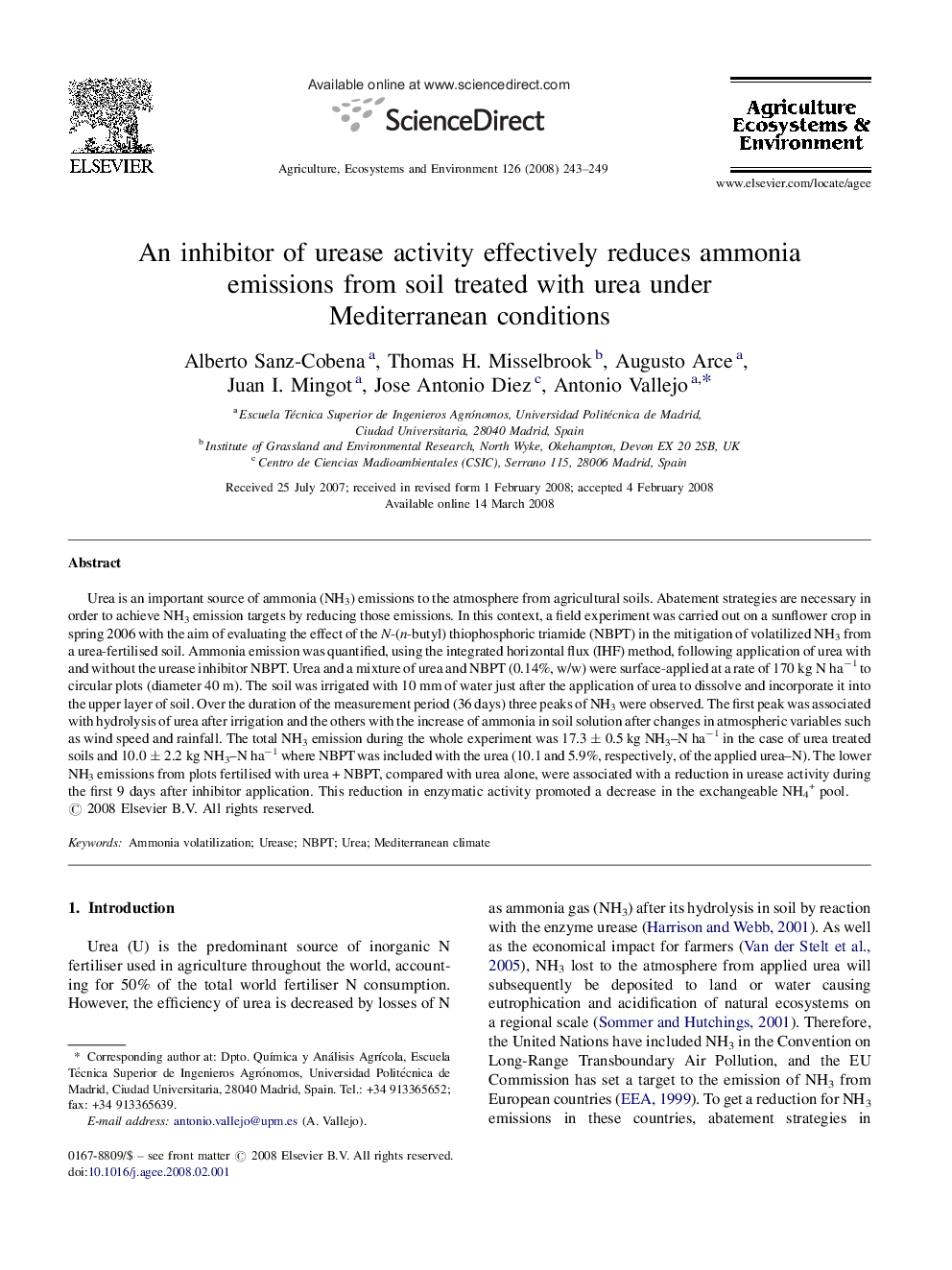| Article ID | Journal | Published Year | Pages | File Type |
|---|---|---|---|---|
| 2415517 | Agriculture, Ecosystems & Environment | 2008 | 7 Pages |
Urea is an important source of ammonia (NH3) emissions to the atmosphere from agricultural soils. Abatement strategies are necessary in order to achieve NH3 emission targets by reducing those emissions. In this context, a field experiment was carried out on a sunflower crop in spring 2006 with the aim of evaluating the effect of the N-(n-butyl) thiophosphoric triamide (NBPT) in the mitigation of volatilized NH3 from a urea-fertilised soil. Ammonia emission was quantified, using the integrated horizontal flux (IHF) method, following application of urea with and without the urease inhibitor NBPT. Urea and a mixture of urea and NBPT (0.14%, w/w) were surface-applied at a rate of 170 kg N ha−1 to circular plots (diameter 40 m). The soil was irrigated with 10 mm of water just after the application of urea to dissolve and incorporate it into the upper layer of soil. Over the duration of the measurement period (36 days) three peaks of NH3 were observed. The first peak was associated with hydrolysis of urea after irrigation and the others with the increase of ammonia in soil solution after changes in atmospheric variables such as wind speed and rainfall. The total NH3 emission during the whole experiment was 17.3 ± 0.5 kg NH3–N ha−1 in the case of urea treated soils and 10.0 ± 2.2 kg NH3–N ha−1 where NBPT was included with the urea (10.1 and 5.9%, respectively, of the applied urea–N). The lower NH3 emissions from plots fertilised with urea + NBPT, compared with urea alone, were associated with a reduction in urease activity during the first 9 days after inhibitor application. This reduction in enzymatic activity promoted a decrease in the exchangeable NH4+ pool.
